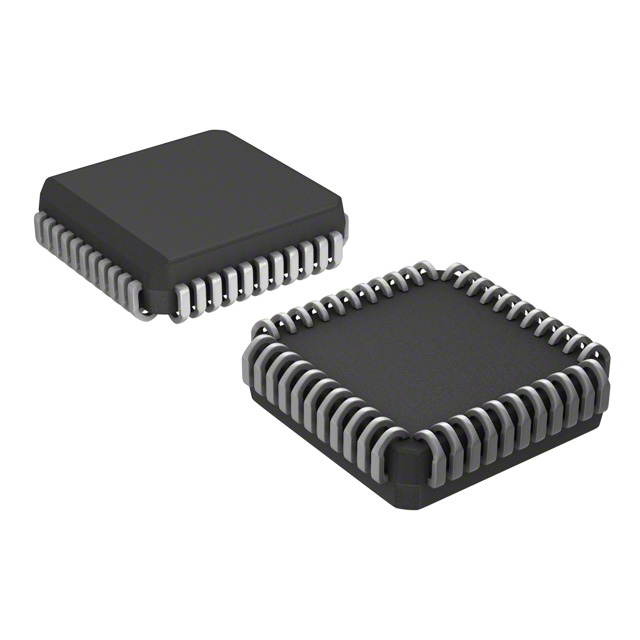ST16C450CJ44TR-F
Product Overview
Category
The ST16C450CJ44TR-F belongs to the category of integrated circuits (ICs).
Use
This IC is commonly used for serial communication applications.
Characteristics
- High-speed data transfer capability
- Low power consumption
- Compact size
- Reliable performance
Package
The ST16C450CJ44TR-F is available in a 44-pin plastic quad flat package (PQFP).
Essence
The essence of this product lies in its ability to facilitate efficient and reliable serial communication.
Packaging/Quantity
The ST16C450CJ44TR-F is typically packaged in reels and is available in quantities suitable for both small-scale and large-scale production.
Specifications
- Data Rate: Up to 1.5 Mbps
- Supply Voltage: 3.3V
- Operating Temperature Range: -40°C to +85°C
- Number of Pins: 44
- Interface Type: UART (Universal Asynchronous Receiver Transmitter)
- FIFO Buffer Size: 16 bytes
- Supported Protocols: RS-232, RS-485, RS-422
Detailed Pin Configuration
The pin configuration of the ST16C450CJ44TR-F is as follows:
- VCC
- GND
- TXD (Transmit Data)
- RXD (Receive Data)
- RTS (Request to Send)
- CTS (Clear to Send)
- DSR (Data Set Ready)
- DCD (Data Carrier Detect)
- RI (Ring Indicator)
- INT (Interrupt)
- REFCLK (Reference Clock)
- X1 (Crystal Oscillator Input)
- X2 (Crystal Oscillator Output)
- RESET (Reset)
- A0-A7 (Address Bus)
- D0-D7 (Data Bus)
- WR (Write Enable)
- RD (Read Enable)
- CS (Chip Select)
- IRQ (Interrupt Request)
Functional Features
- Full-duplex and half-duplex operation modes
- Automatic hardware flow control
- Programmable baud rate generator
- Support for multiple protocols (RS-232, RS-485, RS-422)
- Built-in FIFO buffers for efficient data handling
- Error detection and correction mechanisms
Advantages and Disadvantages
Advantages
- High-speed data transfer capability
- Low power consumption
- Compact size
- Versatile protocol support
- Reliable performance
Disadvantages
- Limited FIFO buffer size (16 bytes)
- Requires external crystal oscillator for clock generation
Working Principles
The ST16C450CJ44TR-F operates based on the principles of UART communication. It receives serial data from the transmitting device, converts it into parallel format, and transmits it to the receiving device. Similarly, it receives parallel data from the receiving device, converts it into serial format, and transmits it back to the transmitting device.
Detailed Application Field Plans
The ST16C450CJ44TR-F finds applications in various fields, including: 1. Industrial automation 2. Telecommunications 3. Networking equipment 4. Embedded systems 5. Data acquisition systems
Detailed and Complete Alternative Models
Some alternative models that offer similar functionality to the ST16C450CJ44TR-F include: 1. MAX3232EIPWR 2. SC16C550BIBS 3. XR16M2550IL32-F
These models can be considered as alternatives depending on specific requirements and design constraints.
Word count: 534 words
技術ソリューションにおける ST16C450CJ44TR-F の適用に関連する 10 件の一般的な質問と回答をリストします。
Sure! Here are 10 common questions and answers related to the application of ST16C450CJ44TR-F in technical solutions:
Q: What is the ST16C450CJ44TR-F? A: The ST16C450CJ44TR-F is a UART (Universal Asynchronous Receiver/Transmitter) integrated circuit commonly used for serial communication in technical solutions.
Q: What are the key features of the ST16C450CJ44TR-F? A: Some key features include a 16-byte FIFO buffer, programmable baud rate generator, support for various data formats, and compatibility with multiple voltage levels.
Q: How can I interface the ST16C450CJ44TR-F with a microcontroller or processor? A: The ST16C450CJ44TR-F typically uses a standard parallel interface such as the 8-bit data bus, control signals (e.g., read/write, chip select), and interrupt lines.
Q: Can the ST16C450CJ44TR-F be used in both full-duplex and half-duplex communication modes? A: Yes, the ST16C450CJ44TR-F supports both full-duplex and half-duplex communication modes, allowing bidirectional data transfer.
Q: What is the maximum baud rate supported by the ST16C450CJ44TR-F? A: The ST16C450CJ44TR-F can support baud rates up to 1.5 Mbps, depending on the clock frequency and other configuration settings.
Q: Does the ST16C450CJ44TR-F have built-in error detection and correction mechanisms? A: Yes, the ST16C450CJ44TR-F includes hardware support for parity generation and checking, as well as framing error detection.
Q: Can I use the ST16C450CJ44TR-F in low-power applications? A: Yes, the ST16C450CJ44TR-F offers power-saving features such as automatic wake-up from sleep mode and programmable power-down modes.
Q: Is the ST16C450CJ44TR-F compatible with different operating voltages? A: Yes, the ST16C450CJ44TR-F is designed to work with a wide range of voltage levels, typically between 3.3V and 5V.
Q: Are there any software development tools available for programming the ST16C450CJ44TR-F? A: Yes, various software development tools, such as UART driver libraries and configuration utilities, are available to facilitate programming and configuration of the ST16C450CJ44TR-F.
Q: What are some typical applications of the ST16C450CJ44TR-F? A: The ST16C450CJ44TR-F is commonly used in applications such as industrial automation, embedded systems, communication interfaces, and serial data transfer in general.
Please note that the answers provided here are general and may vary depending on specific requirements and implementation details.


